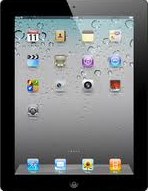
Grades 9-12

Don't have an account yet? Sign up for free
Don't have an account yet? Sign up for free


What better way to address Common Core standards in Reading Informational Text than by meeting a gentleman that changed the world of technology!
Have you seen or do you own an iMac, iPod, iPad, iPhone or an iTunes account? If so, you have Mr. Steve Jobs to thank for those products! This lesson will introduce you to the economic concept of entrepreneurship and spotlight the life of a well known entrepreneur. In addition, this lesson will show the impact of Mr. Job’s life on the economy and how technology has changed how we live and work.
Mr. Steve Jobs to thank for those products! This lesson will introduce you to the economic concept of entrepreneurship and spotlight the life of a well known entrepreneur. In addition, this lesson will show the impact of Mr. Job’s life on the economy and how technology has changed how we live and work.
Sources for the Lesson and for further information about the life of Steve Jobs:
Do you have an interest in a particular field of study? Do you like to figure out “how” things work and think of ways to improve things? Do you like the thought of starting your own business? Do you like to be your own boss? If so, you may be an entrepreneur someday.
What does an entrepreneur do? An entrepreneur is “one who draws upon his or her skills and initiative to launch a new business venture with the aim of making a profit. Often a risk-taker, inclined to see opportunity when others do not.”
Do you know what the term “icon” means? Actually, most of the time we think of an icon as “ a pictogram displayed on a screen used to navigate a computer or other mobile device.” An icon is also “a person or thing regarded as a representative symbol of something.” Today’s lesson  will introduce us to a very successful entrepreneur with a fascinating story. He is an icon in the field of technology. Read the following biographical sketch and be prepared to discuss what you read later.
will introduce us to a very successful entrepreneur with a fascinating story. He is an icon in the field of technology. Read the following biographical sketch and be prepared to discuss what you read later.
Steve Jobs was born on February 24, 1955, in San Francisco, California, and was adopted by Paul and Clara Jobs. Steve’s mother was an accountant, and his father was a machinist who fixed cars as a hobby.
Steve knew how to read when he entered kindergarten. He said his two favorite things to do in kindergarten were to read books and go outside and chase butterflies. He was not interested in school much until he entered fourth grade and had Mrs. Hill as his teacher. She offered him many incentives to learn. He did so well in 4th grade that he was able to skip 5th grade and go right to middle school.
As Steve grew up he became increasingly curious about the world of electronics that filled his neighbors’ garages. He often watched his father building and repairing things. Steve’s dad gave him workbench space in the garage and taught him how to build things, take them apart and put them back together again. Steve became very interested in how things worked and were built. He learned that through exploration he could understand very complex things.
When Steve arrived in Homestead High School, he enrolled in a popular electronics class. His electronics teacher later recalled a time when Steve called up Bill Hewlett himself, co-founder of Hewlett Packard, to get spare parts for his homework. As it turned out, he even received a summer job at HP’s factory.
In 1974, Steve got a job as a technician at the video game maker, Atari. He liked the opportunity to get paid for something he loved to do. He saved his money and backpacked around the country of India and then returned to Atari.
Steve Jobs met Steve Wozniak, nicknamed Woz, and discovered they had many things in common. In 1976, Jobs and Wozniak formed Apple Computer Company. They took a risk to start the business by raising $1,300 to invest by Jobs selling his Volkswagen Microbus and Steve Wozniak his special calculator. Steve Jobs became an entrepreneur at the age of 21.
These two gentlemen faced a huge obstacle in the computer market. In the 1970s, most computers were so large that one could fill a room, and they cost so much that consumers  could not afford to buy them. Jobs and Wozniak designed their computer to be sold to individual users who would demand their product. They created the personal desktop computer. When the Apple I entered the marketplace, consumers were presented with a smaller, cheaper, and affordable option. Their first model earned them $774,000. Three years after they released their second model, the Apple II, sales had increased 700 percent to $139 million dollars. In 1980, the company became a publicly traded company with a market value of $1.2 billion on the very first day of trading.
could not afford to buy them. Jobs and Wozniak designed their computer to be sold to individual users who would demand their product. They created the personal desktop computer. When the Apple I entered the marketplace, consumers were presented with a smaller, cheaper, and affordable option. Their first model earned them $774,000. Three years after they released their second model, the Apple II, sales had increased 700 percent to $139 million dollars. In 1980, the company became a publicly traded company with a market value of $1.2 billion on the very first day of trading.
Jobs has been very successful in business. He was always willing to take the risks involved with introducing products into the marketplace. The Apple III computer suffered technical and marketing problems. Jobs and Wozniak decided to remove the product from the market, improve the product and reintroduce later. In 1983, Jobs unveiled the Lisa. It was designed for people who did not have many computer skills. It did not sell well. Competition from other computer firms also caused Apple to struggle.
Always perservering, Apple introduced the Macintosh in 1984. It didn’t sell well at first to consumers. In 1985, Jobs resigned from the company he had helped start.
Did he quit? No! He hired some of his former employees and started NeXT. The NeXT machine never caught on because it was too costly, had a black and white screen and could not be linked to other computers or run common software.
So, Steve Jobs then purchased a small computer animated company called Pixar from filmmaker George Lucas. Nine years later, Pixar released Toy Story. Other movies that came out included Toy Story 2, A Bugs’ Life, and Monsters, Inc. which were all very successful.
In 1995, Apple purchased NeXT Software for over $400 million, and Steve Jobs returned to Apple as a part time consultant and Chief Executive Officer. The following years saw the unveiling of the iMac, iBook, iPod, iTunes, iPhone, and iPad.
From an article entitled, What Students Can Learn From Steve Jobs, the author stated:
“There were computers before the Apple. There were mp3 players before the iPod. There were mobile phones before the iPhone, and there were tablet computers before the iPad. In  each, though, Jobs and his colleagues took the time to understand how the function performed by the device fit into the daily narrative of our lives. They carefully built stories, and from those, they built tools of deceptive simplicity. When computers had cursor keys, they gave us a mouse. When computers had text, they gave us icons. When music was pirated, they gave us iTunes. Innovation is not merely a cool invention. Innovation finds the value of that invention in people’s lives.” Steve Jobs was innovative and had a very entrepreneurial spirit.
each, though, Jobs and his colleagues took the time to understand how the function performed by the device fit into the daily narrative of our lives. They carefully built stories, and from those, they built tools of deceptive simplicity. When computers had cursor keys, they gave us a mouse. When computers had text, they gave us icons. When music was pirated, they gave us iTunes. Innovation is not merely a cool invention. Innovation finds the value of that invention in people’s lives.” Steve Jobs was innovative and had a very entrepreneurial spirit.
Steve Jobs suffered with cancer for several years before his death on October 5, 2011. Do you think consumers are aware of and appreciate the products he brought to market? Just ask anyone holding an iMac, iPhone, iPad, or listening to music they downloaded from iTunes, and you’ll have your answer.
Tell students it is now time to review what they learned from the life of Steve Jobs.
At the beginning of the lesson we discovered that an entrepreneur is “one who draws upon his or her skills and initiative to launch a new business venture with the aim of making a profit. Often a risk-taker, this person is inclined to see opportunity when others do not.”
 Today’s lesson has taught us that an entrepreneur is a person “who draws upon his or her skills and initiative to launch new business venture with the aim of making a profit. Often a risk-taker, this person is inclined to see opportunity when others do not.” Steve Jobs had a love for learning how things worked at a young age and developed many skills throughout his life that helped him develop many technology products for consumers.
Today’s lesson has taught us that an entrepreneur is a person “who draws upon his or her skills and initiative to launch new business venture with the aim of making a profit. Often a risk-taker, this person is inclined to see opportunity when others do not.” Steve Jobs had a love for learning how things worked at a young age and developed many skills throughout his life that helped him develop many technology products for consumers.
This “rollover” interactive will give the students bits of information regarding some of the most successful and influential entrepreneurs.
The “drag and drop” interactive will challenge the students to drag a company logo to its correct entrepreneur.
iMagine iNnovation!
Create a product for the market that you feel consumers would demand. Make a prototype of the product. Steve Jobs was quoted in “What Student Can Learn From Steve Jobs” as saying that he demanded that his employees explain a product’s function and purpose in 30 seconds. Create a commercial for your new product. Be prepared to tell your class the following things in your 30 second commercial: name of product, price of product, benefits of product, and where product can be purchased.
Imagine you are being interviewed by a student assigned to write a paper about Steve Jobs and entrepreneurship. He has several questions to ask you.

Grades 9-12

Grades 9-12

Grades 9-12

Grades 9-12
